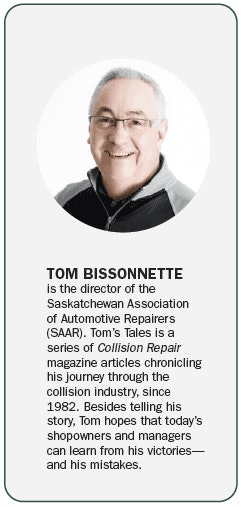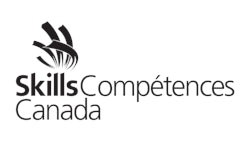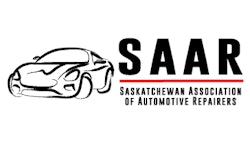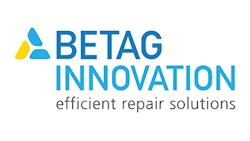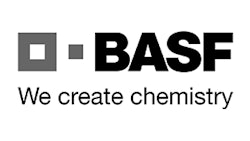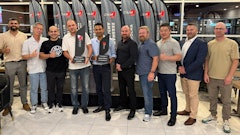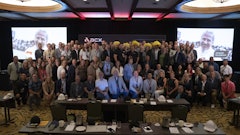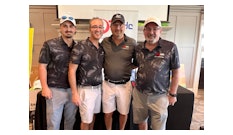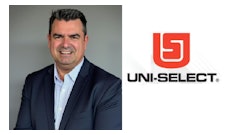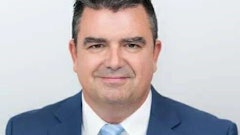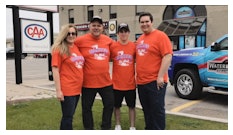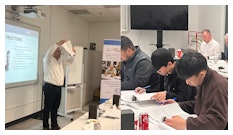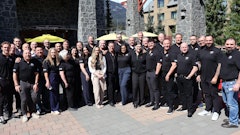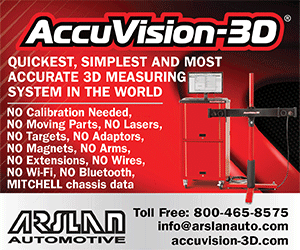
A recap of SAAR’s latest event
Several years ago, Jessica Hill-Flaman of Saskatchewan Government Insurance (SGI) asked me why I was doing every single job at our conferences and running myself ragged. It took a while to get that thought through my brain, but eventually I started relying on other people to help carry the load. I have had tremendous help from my lovely wife, Barb; my daughter, Lisa; Zac Chartrand from Henderson Insurance; Shane Goller from TBS in Prince Albert; Jessica Rust from Chuck’s Collision Centre in Assiniboia and Jeff Wildman from BASF.
Next, I want to thank all our suppliers for their generous sponsorship. There is no way we could put on an event like this without their support.
I also want to extend thanks to SGI for sending almost 20 people to our event to connect and communicate with Saskatchewan Association of Automotive Repairers’ (SAAR) members both on and off-stage. I cannot begin to tell you how important these relationships are—we may not be where we want to be but thank goodness we are not where we used to be in our working relationship with SGI. Let’s not take it for granted that we have a group of insurance people that are willing to engage and work with our industry to make the claims process less stressful.
Our speakers were fantastic. Sharon Ashley and Jim Wraight of BodyshopConnect started things off, explaining new features to their existing program. The key thing is that every bodyshop should have a computerized management system to run their business. Trust me, you are missing out on time and money by not having one.
Mike Gilliland and Jenica Bennett from AutoHouse Technologies were next to the stage, explaining how their software program can take information from your computerized shop management system and filter data into bite-sized chunks to help you manage workflow. You’ve heard it a million times already and hopefully it’s getting through to you—you need to manage your work in process (WIP). Having too many vehicles on your lot and in your shop creates confusion and frustration for everyone involved.
A special panel discussion on attracting and retaining employees was well-received and appreciated by our audience. Janet Uchacz-Hart from the Saskatoon Industry and Education Council; Lori Gasper from the Sask Distance Learning Council; Scott Kucharyshen from Saskatchewan Polytechnic; Brayden Neufeld from Parr Auto Body, representing Skills Canada; Mark Edmonds from the Regina and District Industry and Education Council; Dave Flockhart from BETAG Innovation and Merv Armstrong from Swervin’ Mervin Mini Indy all shared how their organizations seek to attract and retain employees in their respective industry businesses. The key with these panellists—with the exception of BETAG—is that they are all working on behalf of SAAR members to direct young people to consider the autobody trade. Dave Flockhart made a great observation when he stated that it doesn’t feel like there is a shortage of young people coming into the trade—rather bodyshops have done a poor job of retaining them and demonstrating a career path.

SGI BROUGHT A HUGE CONTINGENT OF PEOPLE TO THIS EVENT WITH THE INTENT TO CREATE POSITIVE RELATIONSHIPS AND SEEK WAYS TO IMPROVE THE BODYSHOP EXPERIENCE WITH SGI AT ALL LEVELS.
Lisa McNab gave us a short presentation on Regen Replica Systems, which converts plastic waste like bumpers, grilles, headlamps, et cetera, to pellets. Then, using a 3-D printer, it repurposes this waste into usable products— even making hard-to-get parts for bodyshops.
Ryan Bast, executive director for the Motor Safety Association (MSA), gave an overview of the services the association provides to our sector of the automotive industry—most of them free of charge! The MSA offers free support for a bodyshop to receive a Certificate of Recognition (COR) designation at no charge, among many other offerings.
Ciaran Downes, the manager of SGI appraisal services, gave an update on the public insurer’s digital transformation. He also shared insights on the industry’s performance over the past year, noting that SGI has seen continual increases in repaired claims since 2019. This has primarily been driven by labour costs as well as the ‘additional costs’ category, which Ciaran said is mainly paint materials.
As stated, SGI brought a huge contingent of people to this event with the intent to create positive relationships and seek ways to improve the bodyshop experience with SGI at all levels. Yanni Koutmos of Eagle MMS shared the innovative software his company has developed to help track paint and body materials on collision repairs. Koutmos and his team have created a program that captures all the paint and body materials for each specific job, based on the type of damage and the paint code of the vehicle.
Pat Quinney of Quickfalls Auto Body had a horrendous fire that destroyed his bodyshop this past spring. He shared his experience with SAAR attendees, explaining his dealings to date with his insurance company and various government agencies. The bottom line from Quinney—make sure you have a clear understanding of what your insurance coverage provides and what it does not. We at Parr Auto Body recently had our insurance reviewed and we’ve made some major changes based on recommendations from a broker—decisions that potentially saved the shop and me, as the landlord, from some major headaches. Pat added that his biggest headache of the many experienced was the disposal of “hazardous materials” due to the type of fire. He found his cleanup costs were exacerbated considerably due to asbestos and other chemical contamination. At the end of the day, the team hauled just shy of 500 tonnes of rubble to the dump, equalling a cost of $300,000—which you bet came off his rebuilding budget.
3M’s Andy Boyd from St. Paul, Minnesota, made the trip to Saskatoon again this year to educate us on the latest news with RepairStack, 3M’s materials management system. He also shared information on the 3M Collision Repair Academy and gave free admission to one lucky SAAR member—Brett Gareau from Advantage Collision.
LKQ Canada’s Marty Coonan and Dayle Thys emphasized LKQ’s salvage division and a pending partnership with SGI to increase salvage parts usage in Saskatchewan. Car-Part Pro’s Tom Julius explained how his company’s software can bring real-time information on parts directly to bodyshops.
Finally, BGE Indoor Air Quality Solutions brought James Fast to the stage to explain how BGE can supply air filtration to practically any part of your bodyshop. They are a Canadian company with an office in Saskatoon—you can request an assessment for air quality at your shop. Our recent conference was a testament to the power of collaboration and community within the automotive repair industry. It’s clear that, by leaning on one another we are not just improving our individual operations, but taking steps to elevate our entire sector.
Thank you once again to everyone who contributed to this successful fall conference. Your dedication, hard work and commitment to showing up is truly appreciated. See you all at our spring conference!
